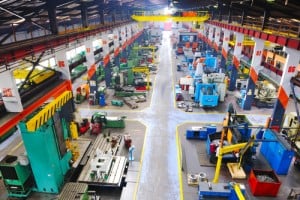Get More Value from Your ERP System
ERP systems are supposed to be the “silver bullet” of computer systems. They’re supposed to solve just about every business problem you might have. They’re supposed to handle finance, purchasing, logistics, orders, shipping, inventory, manufacturing, maintenance and everything else with a beautifully integrated suite of modules.
And, you know what, except for the “silver bullet” part, ERP systems have actually delivered a lot of what they’ve promised. They really have done pretty well in finance and purchasing and logistics and several other areas. For most companies, ERP has been worth its weight in gold just by providing an integrated set of financial records and all the tools you need to manage the financial transactions of the company.
ERP doesn’t have that same track record when it comes to manufacturing, however. ERP doesn’t really support manufacturing that well and there are usually some extra pieces you need to bring to the mix to get ERP to really do what’s needed.
The real problem is that ERP just wasn’t designed to support manufacturing. When it comes to the actual manufacturing processes, or the quality processes, or even the material and inventory processes, ERP usually doesn’t do very well when it hits the shop floor.
You can tell this is the case by the number of Excel spreadsheets it takes to run the shop floor. And, yes, Excel is still the number-one manufacturing management software package in the world. Just look at the number of spreadsheets your manufacturing people use to run the floor. They probably have more spreadsheets now than before they had ERP.
So, what can you do? Can you help the plant without getting into a shop floor versus ERP war? Can you come up with something that helps the people on the shop floor? And, can whatever you come up with keep the ERP people happy and not make them the enemy?
Well, it’s not necessarily going to be easy, but there are some solutions out there that can help the shop floor people, and play nice with ERP as well. There are lots of different technologies, vendors, solutions, software, packages, platforms, toolkits and so on out there. Some of the best are even sold by the big ERP companies. I won’t use any of the names so I can protect the guilty (and the innocent). I’ll just call them manufacturing systems.
So, here’s what makes this all work. Manufacturing systems do more than just help the plant; they can make real impact on the bottom line. Manufacturing systems can help you reduce your costs, increase your quality, provide you with some new capabilities and even help you with your regulatory compliance issues.
So, how can manufacturing systems do this? Here are a few pretty random ideas on what manufacturing systems can do:
• Provide information and trends in real time
• Respond to problems on the shop floor
• Measure and monitor what’s going on
• Support better decision-making processes
• Capture information and its context
• Support continuous improvement initiatives
• Provide new quality tools like SPC / SQC
• Provide better specification management
• Support better asset utilization
• Provide more manufacturing flexibility and agility
• Increase productivity and throughput
• Increase yields and reduce waste
• Provide root cause analysis
• Support lean and six sigma initiatives
• Automate compliance processes
• Automate recordkeeping and reporting
So, why does all this work? Because these are the kinds of things they need on the shop floor. And, this is not typically what ERP is all about. If you can deliver solutions that do these kinds of things, they really shouldn’t conflict with the ERP system, and they can provide some major benefits to the people on the shop floor. And that can provide some major returns to the company, which isn’t a bad idea at all.


